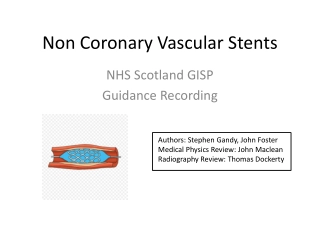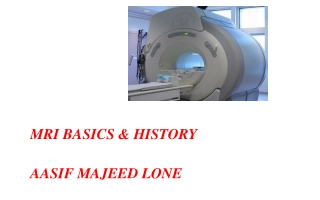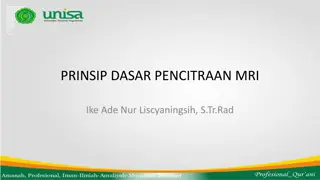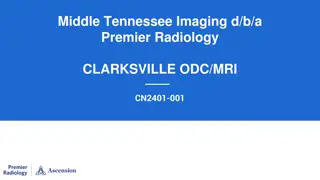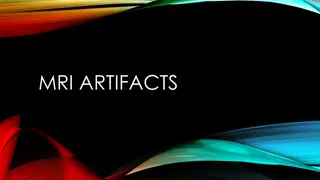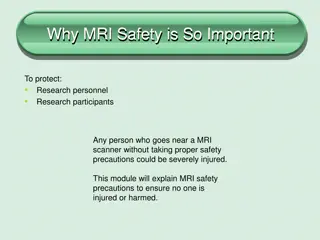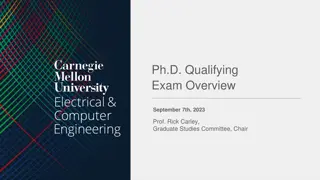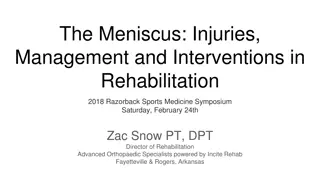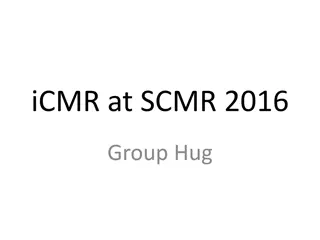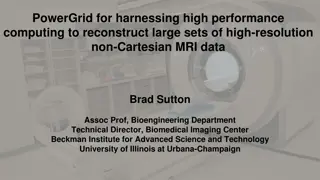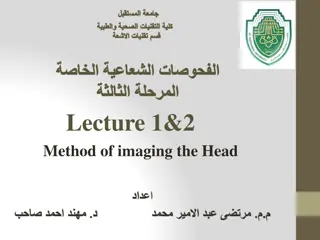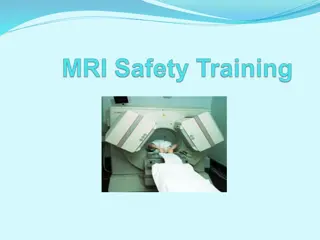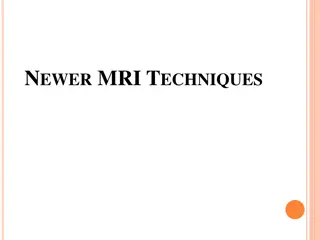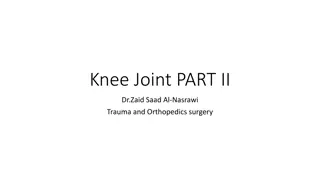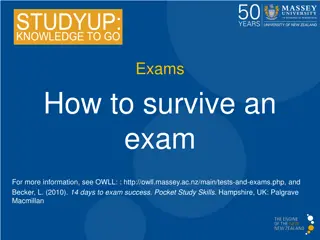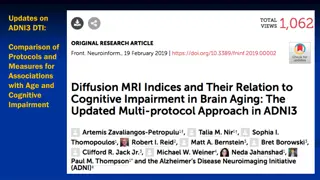MRI Tips and Insights for Meniscus Exam
Explore essential MRI tips and insightful images for evaluating meniscus conditions and tears. From identifying normal features to diagnosing tears and common tear shapes, this informative content provides valuable knowledge for medical professionals in orthopedics.
Download Presentation

Please find below an Image/Link to download the presentation.
The content on the website is provided AS IS for your information and personal use only. It may not be sold, licensed, or shared on other websites without obtaining consent from the author.If you encounter any issues during the download, it is possible that the publisher has removed the file from their server.
You are allowed to download the files provided on this website for personal or commercial use, subject to the condition that they are used lawfully. All files are the property of their respective owners.
The content on the website is provided AS IS for your information and personal use only. It may not be sold, licensed, or shared on other websites without obtaining consent from the author.
E N D
Presentation Transcript
MRI tips T1 scan-short numbers (1); short black coffee ; fluid is dark T2 scan-long numbers-fluid is bright Medial tib plateau like a golf tee; lateral like a rifle handle
MRI use fluid e.g. effusion to help identify type T1 w image T2 w image Quite bright (unless fat suppressed) Fat Bright (high signal) Fluid Dark (low signal) Bright TE& TR short long TR 500msec TR 1500 msec TE <30msec TE 80- 00 msec
Views - 1 coronal 2 sagittal 3 - axial Sagittal menisci Coronal Axial T1 T2 patellofemoral joint and popliteus Collateral ligaments T2 fat supp. cruciates, cartilage and bone Menisci high intensity signal Proton Density menisci
Normal meniscus C shaped with thicker periphery With 4mm slice expect 2 bowtie slices through ant & post horns Medial meniscus Post horn > ant horn Lateral meniscus PH = AH PH should never be small than AH
Medial meniscus posterior horn> anterior horn Lateral meniscus posterior horn sits slightly higher and is either > or = anterior horn;
Bow tie sign Central aspect of meniscus two black triangles (anterior and posterior horn) making a bow tie Posterior horn (arrow) larger than anterior horn 05_0339_01
Most common shapes of tears (complex =combination) Longitudinal Horizontal Radial divides into inner and outer Think of pitta bread
To diagnose a tear, high signal has to unequivocally reach the surface of the meniscus to be a tear Meniscus is not homogenous in signal (may not be solid black)-does not mean is tear
Displaced tears Bucket-handle tear = displaced longitudinal tear-normally managed surgically. Flap tear = displaced horizontal tear. Parrot beak = displaced radial tear.
Bucket handle tear Double posterior cruciate ligament (PCL) sign. The fragment usually lies under the PCL giving the double PCL sign. The peripheral meniscal remnant will have an irregular edge and will appear abnormally small
Discoid meniscus Congenital anomaly, more common laterally and more common in Asian population (up to 17%) compared to Western population (approx 3%) Often asymptomatic however different structure to normal and more prone to tear Coronal scan-lateral meniscus extends across entire lateral compartment Sagittal scan-bow tie appearance of meniscus goes across centre of joint
ACL Acute ACL tear. (a) Well defined straight fibres of the normal ACL (arrows). (b) In the acute ACL tear the normal ligament is replaced by a high signal heterogeneous mass (arrow). A B
Typical pattern of bony injury associated with anterior cruciate ligament tear-T1 weighted image showing bone bruise (marrow oedema) in WBing portion of lateral femoral condyle (arrow) and posterior aspect lateral tibial plateau (due to IR of tibia and valgus angulation of knee with ACL injury).
Empty notch sign for ACL Should see ACL fibres attaching to lateral femoral condyle, shouldn t be fluid against interior lateral femoral condyle
Chondral flap (with bone marrow oedema)
Grade 4 chondral thinning to bone of the medial tibial plateau (arrows) greater than to adjacent medial femoral condyle
Insufficency fracture Similar to stress #, ortho often not concerned however confer with them
SONK Acute sudden severe pain without history of trauma Older (> 55yrs), female> male patients (ratio approx. 3:1) Often managed initially by protected Wbing, confer with ortho and may want follow up imaging in 6- 8/52 to ensure is resolving


